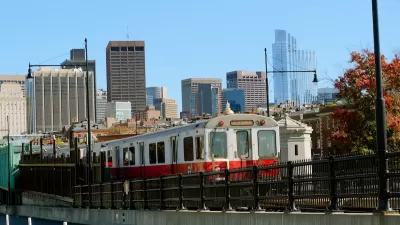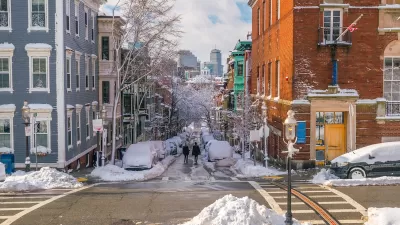Ruth Graham details the work of Franz-Josef Ulm, who is developing a theory of "urban physics" that compares the structure of cities to materials found in nature. Boston, for instance, is disorderly like water (and Los Angeles).
According to Graham, Ulm's work analyzes cities "the way you’d analyze a material, looking at factors such as the arrangement of buildings, each building’s center of mass, and how they’re ordered around each other." Some of Ulm's conclusions: "Boston’s structure, for example, looks a lot like an 'amorphous liquid.' Seattle is another liquid, and so is Los Angeles. Chicago, which was designed on a grid, looks like glass, he says; New York resembles a highly ordered crystal."
"If the analogy does hold up, Ulm hopes it will give planners a new tool to understand a city’s structure, its energy use, and possibly even its resilience to climate change."
Graham's article includes Ulm's work among the inroads made by researchers in the "science of cities" by quoting Michael Mehaffy, who wrote on that subject for Planetizen in June. Mehaffy's take on Ulm's work: although it's "fascinating and potentially very important," but that comparisons can be reductive of the unique structures of cities.
FULL STORY: What ‘urban physics’ could tell us about how cities work

Trump Administration Could Effectively End Housing Voucher Program
Federal officials are eyeing major cuts to the Section 8 program that helps millions of low-income households pay rent.

Planetizen Federal Action Tracker
A weekly monitor of how Trump’s orders and actions are impacting planners and planning in America.

Ken Jennings Launches Transit Web Series
The Jeopardy champ wants you to ride public transit.

Washington Legislature Passes Rent Increase Cap
A bill that caps rent increases at 7 percent plus inflation is headed to the governor’s desk.

From Planning to Action: How LA County Is Rethinking Climate Resilience
Chief Sustainability Officer Rita Kampalath outlines the County’s shift from planning to implementation in its climate resilience efforts, emphasizing cross-departmental coordination, updated recovery strategies, and the need for flexible funding.

New Mexico Aging Department Commits to Helping Seniors Age ‘In Place’ and ‘Autonomously’ in New Draft Plan
As New Mexico’s population of seniors continues to grow, the state’s aging department is proposing expanded initiatives to help seniors maintain their autonomy while also supporting family caregivers.
Urban Design for Planners 1: Software Tools
This six-course series explores essential urban design concepts using open source software and equips planners with the tools they need to participate fully in the urban design process.
Planning for Universal Design
Learn the tools for implementing Universal Design in planning regulations.
Heyer Gruel & Associates PA
Ada County Highway District
Institute for Housing and Urban Development Studies (IHS)
City of Grandview
Harvard GSD Executive Education
Toledo-Lucas County Plan Commissions
Salt Lake City
NYU Wagner Graduate School of Public Service





























